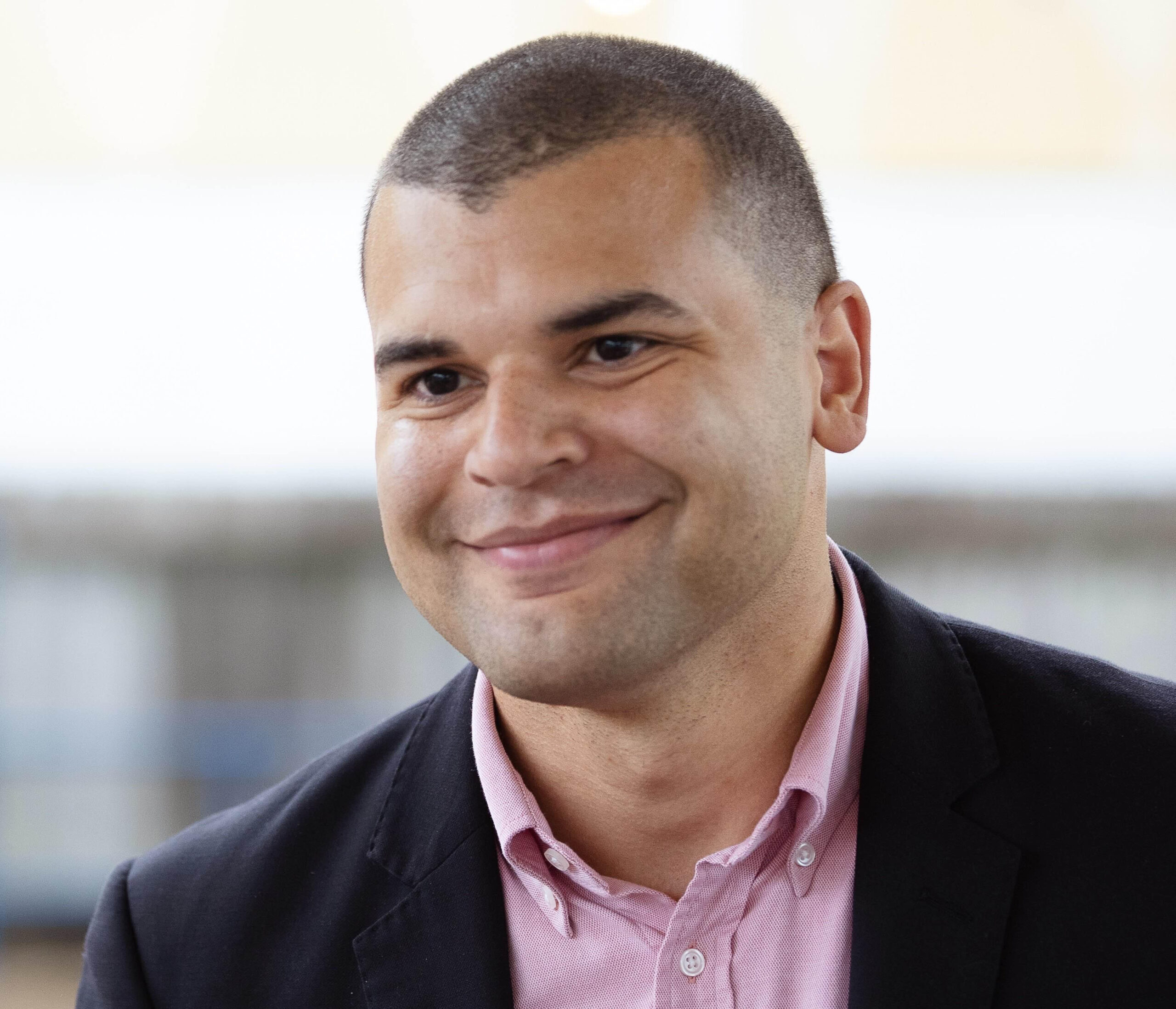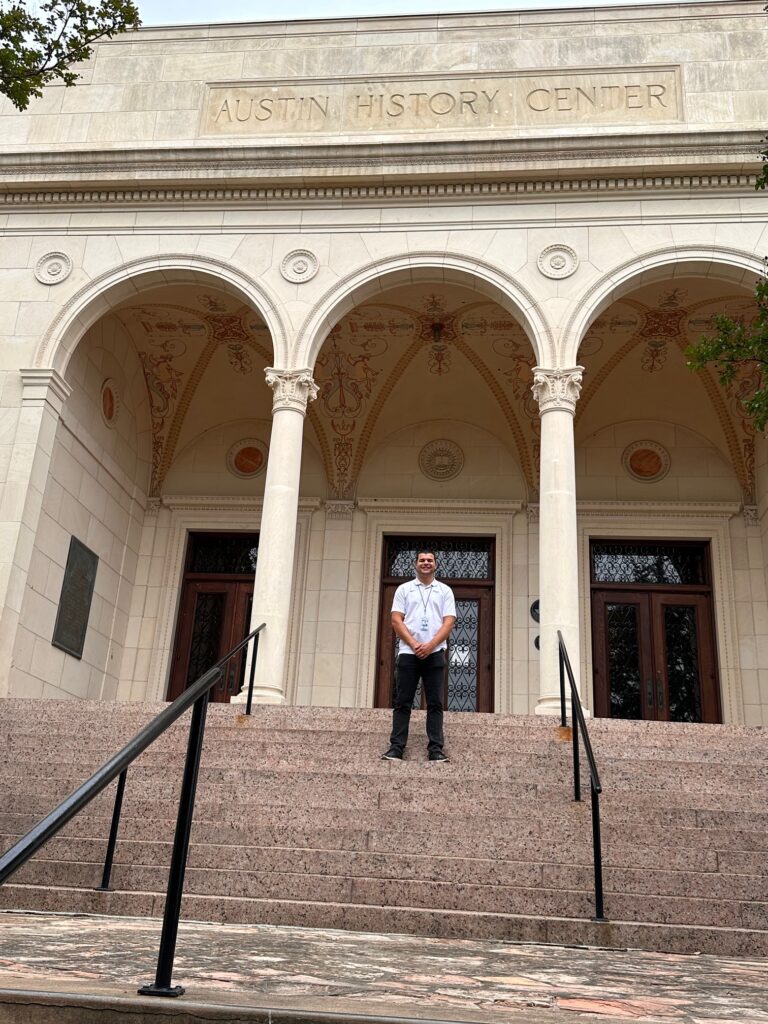Adam Powell
By Forrest Preece
Recently, Jennifer Chenoweth, Division Manager for the Austin History Center, gave me a special treat by allowing me to see the massive array of card catalogs of Austin building permits. They are on the third floor of what will become the Center’s expanded facility in the Faulk Building on Guadalupe at Eighth Street. With minimal effort, I was able to locate the index card from 1939 on my family house in Rosedale. It even had an entry about the addition of our “den” in April 1953, which cost a whopping $650. In that goosebump-inciting moment, I had a glimpse of what The Austin History Center can become – a way to connect Austinites to the heritage of our town in a meaningful way.
To facilitate this vision, it’s going to take a lot of planning, hard work, and money. That’s what the Austin History Center Association (AHCA) is all about -- and its newly named executive director Adam Powell has his sleeves rolled up for the task. He is a force – and many people around town will soon come to know who he is.
Back in February, Linda and I attended an AHCA Fuller Circle event at the Headliners Club where he made some remarks. We were bowled over by his charisma, speaking talent, and enthusiasm. After that meeting, Linda and I both remarked that with his talents, Adam should go into politics. It turns out that he has already run for City Council once. But being an unknown on the local political scene worked against him. He finished behind two candidates who have been around for a while.
Adam has a solid history here in town. He’s an Austin native and the son of educators. His mother taught in the Leander ISD, and his dad was an educational psychology professor at UT. Some of his favorite memories are from his childhood in the Capital City. He especially savors the memory of Jan. 1, 2006, when Vince Young led UT to the national championship. That night, his folks packed the whole family into their van, and they drove down to see the orange Tower. Then there are specific places like the Bullock Museum, the Turtle Pond at UT, and the Zilker Botanical Garden that he enjoys. “I’m glad that I am able to stay in this beautiful city, with so many special places,” Adam says.
Adam earned a degree in history at TCU, and he was a student worker with that institution’s special collections when they were moving from one building to another. He also interned at the National Archives in Fort Worth for a year, and at one point, he felt like being an archivist was a career possibility, but it was a little too quiet for him. “This is a dream come true, to be able to support archivists without being one myself.”
After we sat down among piles of boxes and records in the 1933 Library Building at 9th and Guadalupe (yes, it’s in transition), Adam quickly brought up their Vision Plan. This strategy revolves around creating a more robust public presence for the center with a campus that ties together the 1933 Library Building and the Faulk Building to the south and includes Wooldridge Square Park across Ninth Street as part of the environment. “All these elements will work in concert to celebrate our history.”
Adam and his team recognize that they are on the precipice of a rapidly growing impact. But he says that they need to fundraise at a year-after-year level that hasn’t been achieved before. It will take endowments from donors, bond money, a capital campaign, grants from the city, and historic tax credits. None of this can happen unless they get the Vision Plan finished and done the right way.
He says that within the next few months, the History Center in the Faulk Building will reopen. It will be truly new and improved. On the first floor, there will be attractive and engaging public exhibits showcasing Austin's history and the archival process. The building will have ample space for the collections, a reading room on the second floor, and massive archives on the third floor, which will function with an electronically controlled sliding system. The fourth floor will have administrative offices, plus a conference room and an audio-visual center. In this area, serious researchers and people who are just curious about Austin history will be able to view a large library of oral histories from long-time Austinites, among other artifacts.
The card catalogs are well organized and work fine. But they also want to harness resources and innovation from the local high-tech community that they can offer to make the catalogs more accessible. The AHCA leadership team knows that they need to reach the younger generation of people who have roots in the area but are not as aware of the History Center, to make sure that the center remains vibrant.
Adam notes that they must have a significant presence at City Hall to recognize their ambitious visions and to build in-depth support for their strategy. He mentioned other civic groups that have succeeded at a high level, such as the Trail Conservancy and Preservation Austin, and he is pointing towards doing the same thing at AHCA.
Right now, they are implementing the short-term rush to move, to get the Vision Plan funded, and then to build for the next ten to 25 years of supporting the place where Austin’s history lives.
The reworking of the History Center isn’t the only thing on Adam’s plate. The AHCA also actively promotes Austin’s history through public events, educational programs, and Waterloo Press publications.
As for his personal life, he is thrilled that he came back to town, and he has surrounded himself with ten of his best friends from high school. Now his wife is part of that tight circle as well. Being outdoors in Austin’s natural beauty invigorates him -- he loves to go hiking and rock climbing along the Greenbelt.
“The best thing in my life is that I was able to move back to Austin after college. I’m pinching myself that I’m coming into the Austin History Center Association at this point in time,” Adam says.
Comments about Adam:
The Austin History Center Association recently signed a Public/Private Partnership Agreement with the Austin Public Library System to proceed with strategic planning for the 45-year-old organization.
We are honored to have our new executive director Adam Powell navigating the organization into the next generation, embracing Austin's rich and diverse history.
We are leading up to our capital campaign to facilitate the vision for the expanded Austin History Center -- our two-building campus containing Austin's historically significant former central libraries.
-- Charles Peveto, President, Austin History Center Association








